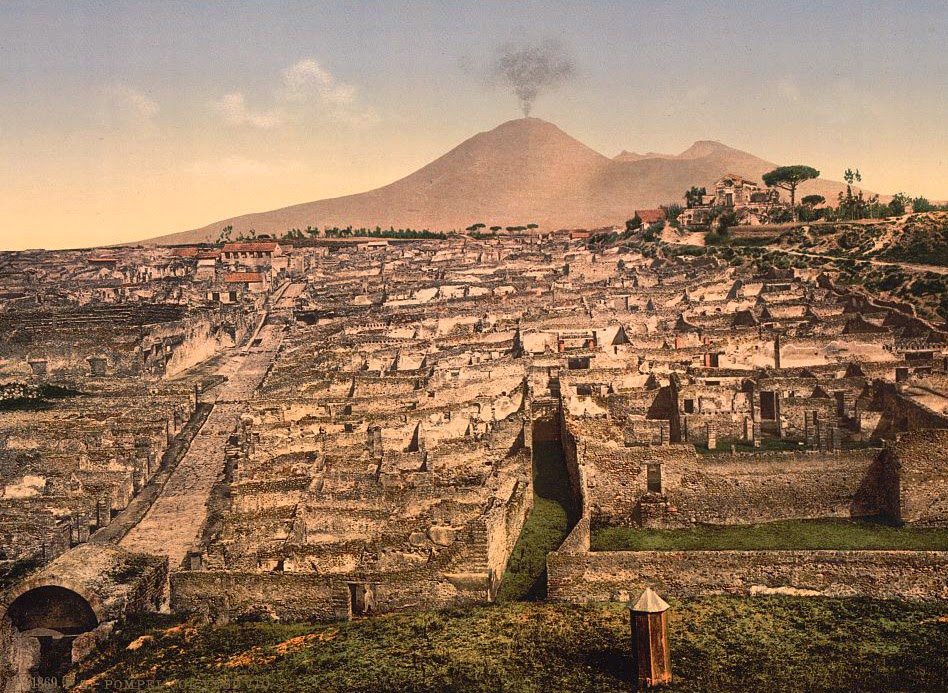Given the right geological circumstances, brains can become glass. During the 1st-century eruption of Mt. Vesuvius, for example, one fleeing victim’s brain was allegedly vitrified, its soft, thinking tissues transformed into “small, glassy black fragments that were just attached inside the skull,” the Washington Post reports, like shards of a broken window.
 [Image: Brainglass, via the Washington Post.]
[Image: Brainglass, via the Washington Post.]
These reflective fragments—little black mirrors—“contained proteins common in brain tissue, researchers found, and had undergone vitrification and transformed into glass.” That made this “the first time brains from any human or animal have been found fossilized as glass.” This, of course, could be because we haven’t been looking: what other deposits of obsidian lying around on the Earth’s surface are actually fossilized animal brains? Vitrified neurology.
In any case, I was reminded of an exhibition last summer at the Getty Villa here in Los Angeles called Buried by Vesuvius: Treasures from the Villa dei Papiri. Among the artifacts on display were these incredible “carbonized papyri,” or scrolls—ancient books—that had been turned into seemingly useless lumps of charcoal.
 [Image: Carbonized papyrii on display at Buried by Vesuvius: Treasures from the Villa dei Papiri; photo by BLDGBLOG.]
[Image: Carbonized papyrii on display at Buried by Vesuvius: Treasures from the Villa dei Papiri; photo by BLDGBLOG.]
The amazing thing was that, by using advanced medical imaging equipment to peer inside the lumps, researchers discovered that these previously illegible objects could be made readable again, virtually unrolled using X-ray tomography and character-recognition algorithms, to reconstruct the scrolls’ lost content. They were “able to use the medical imaging technology, which is usually used to examine soft human tissues, to detect the tiny bump of ink on the surface of a scroll without damaging the fragile artifact.”
To be honest, this is one of the coolest things I’ve ever seen—the “noninvasive digital restoration of ancient texts… hidden inside artifacts.” Otherwise mute objects given technical legibility. (A similar technique inspired one of the greatest New York Times headlines of the past few years: “Scanning an Ancient Biblical Text That Humans Fear to Open,” combining, at a stroke, H.P. Lovecraft, X-ray imaging technology, and possible Christian apocrypha.)
Stepping away from realistic technical applications for just a moment into the world of pure science fiction, it is fascinating to imagine a team of future researchers using 21st-century medical imaging techniques to scan, Jurassic Park-style, for lost thoughts lodged inside pieces of obsidian, black glass fossils of animal brain tissue, almost like the reader of unicorn skulls in Haruki Murakami’s novel Hard-Boiled Wonderland and the End of the World.
The idea that some of the rocks around us might, in fact, be glass brains—brainglass, a new mineral—neurological apocrypha awaiting decipherment, suggests a thousand new novels and storylines. Neurogeonomicon.
Black and ancient brains dreaming inside what humans mistook for geology.

 [Image: Alexander Graham Bell, inventor of the telephone, steps forth into the ruins of the “extinct city” of Pompeii; courtesy
[Image: Alexander Graham Bell, inventor of the telephone, steps forth into the ruins of the “extinct city” of Pompeii; courtesy  [Image: General view of Pompeii and Mt. Vesuvius; courtesy
[Image: General view of Pompeii and Mt. Vesuvius; courtesy  [Image: The Street of Tombs, Pompeii; courtesy
[Image: The Street of Tombs, Pompeii; courtesy  [Image: Fortuna Street, Pompeii; courtesy
[Image: Fortuna Street, Pompeii; courtesy  [Image: The Forum, Pompeii; courtesy
[Image: The Forum, Pompeii; courtesy